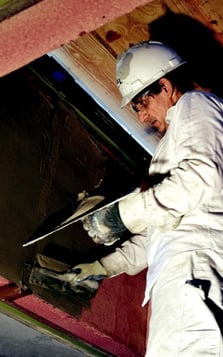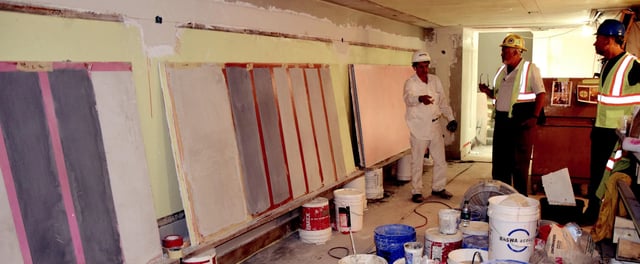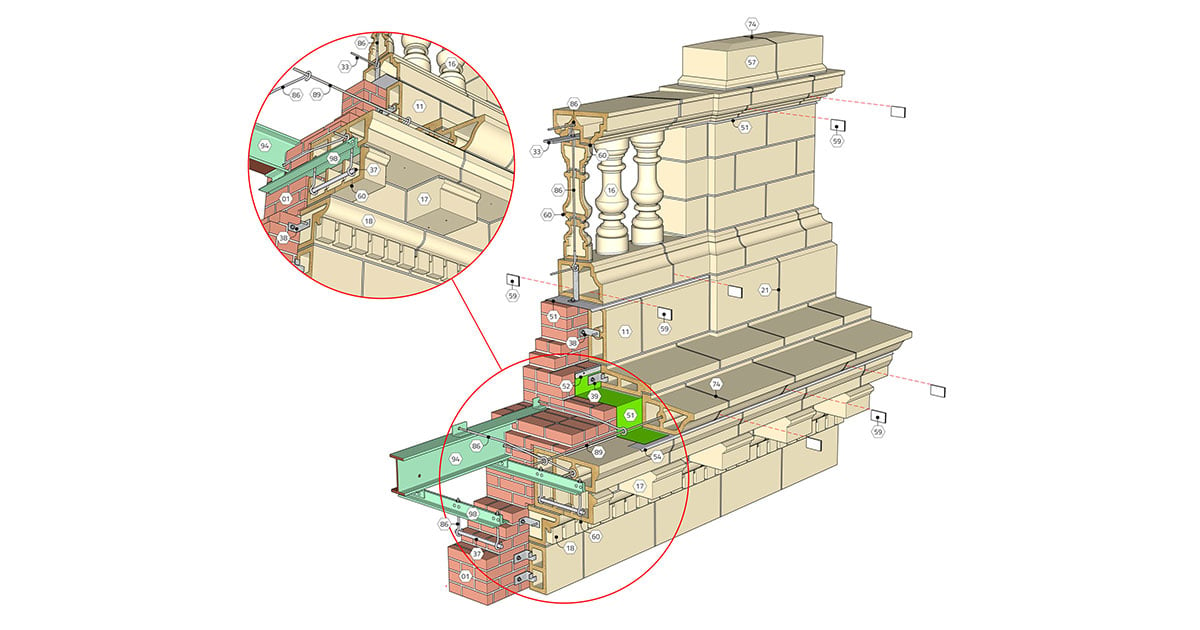
In my role as director of technical service with International Masonry Institute (IMI), I am often asked by Chicago architects “Do today’s plasterers have the same skills as those from 100 years ago?” My answer is always a reassuring and resounding “Yes.”
Plastering is alive and well in Chicago and across the United States, thanks to the comprehensive apprenticeship and training programs of IMI’s International Masonry Training and Education Foundation and the plastering contractors signed with the International Union of Bricklayers and Allied Craftworkers (BAC). Plastering, like ceramic tile and terrazzo, is an allied craft of the bricklaying trade. The restoration of the historic plaster work at Frank Lloyd Wright’s Unity Temple in Oak Park, Illinois, is one example of how today’s expert plasterers are employing classic techniques with modern materials to deliver high-performing and historically accurate plaster finishes to this building’s walls and ceilings.
Designed in 1905 and dedicated in 1909, Wright’s masterpiece had many architectural features that define its significance, not the least of which are the subtly painted and textured plaster finishes. According to the Unity Temple Restoration Foundation (UTRF), original specifications indicate that the plaster interior was composed of a lime cement plaster with crushed flint or torpedo sand aggregate and goat or cattle hair fibers “well beaten, soaked and thoroughly mixed into lime paste” finished evenly with a soft felt or cork faced trowel.
Over the decades, many plaster repairs have obscured and compromised the original textured plaster, and modern latex paint has completely altered the appearance of Wright’s design aesthetic. The challenge for the restoration architects from Harboe Architects, PC, involved in Unity Temple’s restoration since 2001, and the plastering contractor J.P. Phillips Inc. is to restore the plaster to its original design intent: the soft and subtle kind of finish that was known to have existed and was rediscovered after extensive investigation.

According to general contractor Berglund Construction, the scope of the plaster restoration is to provide a new plaster finish to all of the originally plastered walls and ceilings, replicating the original composition, finish and color. Originally there were three finishes: a strongly-textured sand finish with distinctive trowel markings; a lightly textured sand finish; and a more challenging smooth finish, monolithic in appearance.
In areas where no patching is required, the new finish will be applied as a skim coat over existing surfaces. In areas requiring minor patching, plasterers will apply a base coat of sand, cement and lime in proportion to match the original composition; this new base coat gets applied to wire lath that is attached directly to the original cast-in-place concrete structure prior to the new finish coats. In ceiling coffers and in areas requiring major patching, such as wall chases required by mechanical and electrical updates, a similar method will be used. The paint, under equal scrutiny as the plaster, will be applied by architectural conservators from Evergreene Architectural Arts.
After many weeks of trials and sample panels painstakingly constructed on-site, the plasterers were finally able to meet Harboe Architects’ strict requirements for composition and texture of the plaster’s base and finish coats. Upon completion, the beautiful and historically accurate restoration of Unity Temple’s walls and ceilings will be a testament to the shared goals and tight collaboration among the conservator, the architect and the plasterers.
First Appeared in Chicago Architect AIAChicago.org





